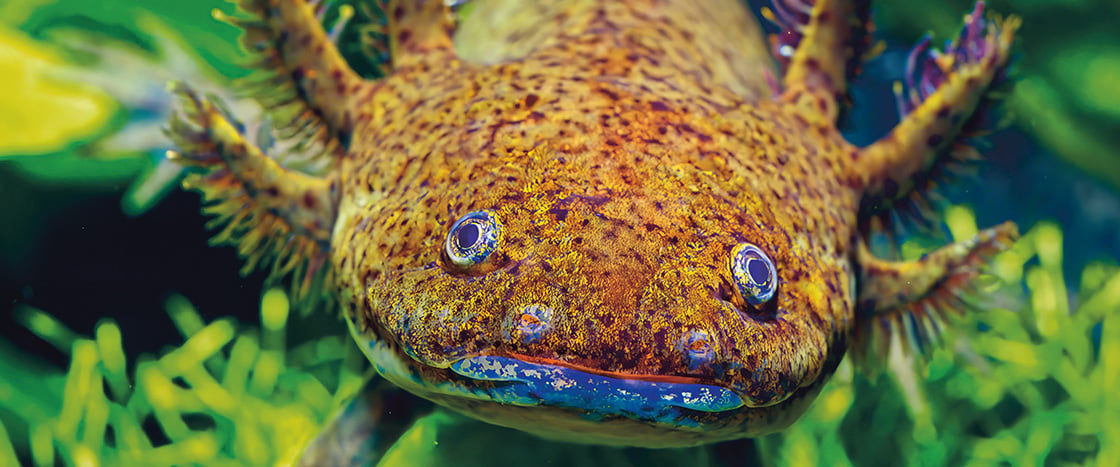Do you recognize this critter? Its six frilly gills look like a crown of feathers. It has a long, flat tail and seems to be smiling. You may have seen it in games like Minecraft and Pokémon. But this is much more than a cartoon character! It’s a real-life animal called an axolotl (ak-suh-LAH-tuhl).
This incredible creature is a type of salamander. It has many unusual traits. For example, it can regrow lost body parts! For people in Mexico, axolotls are important in history and culture.
Today about 1 million axolotls live in science labs or as pets in homes around the world. But in the wild, they’re dying out. Once you know the true story of axolotls, you might be inspired to share what you know with others.
Do you recognize this critter? It has six frilly gills. They look like a crown of feathers. It has a long, flat tail. It seems to be smiling. You may have seen it in games like Minecraft and Pokémon. But this is much more than a cartoon character! It’s a real-life animal. It’s called an axolotl (ak-suh-LAH-tuhl).
This incredible creature is a type of salamander. It has many unusual traits. For example, it can regrow lost body parts! For people in Mexico, axolotls are important in history and culture.
Today about 1 million axolotls live in captivity around the world. These axolotls live in science labs or as pets in homes. But in the wild, they’re dying out. Knowing the true story of axolotls might inspire you to share what you know with others.

